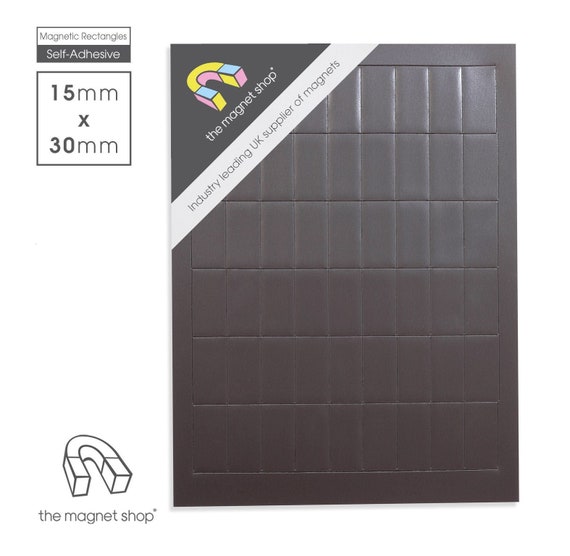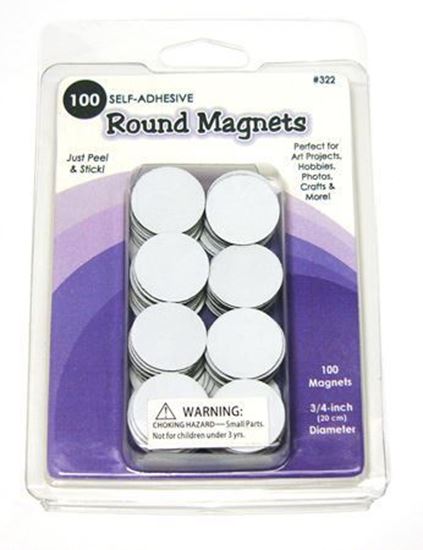Self Adhesive Magnets
Magnetic Cabinet Closures
Small Magnets - Self Adhesive Magnets - Slim Magnets - Strong Magnets - Magnets - Crafting Magnets - Grey Magnets - Album Magnets - 26-052 ASCsupplies. From shop ASCsupplies. 5 out of 5 stars (22,720) 22,720 reviews $ 7.45 FREE shipping Bestseller Favorite Add to. 72 SELF-ADHESIVE MAGNETS rectangle strips teacher school supplies craft crafts. 1 out of 5 stars (1) 1 product ratings - 72 SELF-ADHESIVE MAGNETS rectangle strips teacher school supplies craft crafts. 3/8 x 3/8 x 1/16 Inch Neodymium Rare Earth Adhesive Block Magnets N48 (50 Pack). Self-Adhesive Neodymium Magnets are available online from AMF Magnets.These powerful rare earth magnets combine great magnetic strength with an easy-to-use peel-off adhesive strip on the back to fix the magnet to a variety of compatible surfaces, such as wood, sheet rock, aluminum, steel or plastic.
Pack of 100 Small Square adhesive magnets. Each adhesive magnet sheet is 1' x 1' and 20 mil in thickness. Easy to cut with a sharp pair of scissors, a box knife or a table-top paper cutter. Perfect for photos, Crafts, Kids drawings, Graphics, and more! In our Adhesive Backed Magnets section, we offer a few disc magnets that come with pre-applied adhesive backing. Let’s try a few of these to hold some typical kitchen cabinets and drawers closed. We start with the ½” diameter D81AD-P disc magnets. They come in matched pairs, each with adhesive backing on one side of the magnet.
What magnets can be used to hold a cabinet door closed?
Magnetic closures are commonly used to hold doors and drawers closed on everything from furniture to cabinets. Usually, these closures are products made with magnets and other parts (steel, plastic, etc.) that make a magnetic closure. We don’t sell any products or assemblies like this, but that doesn’t stop folks from using powerful neodymium magnets for this purpose.
This month, we’ll take a look at a few solutions that work well.
Simple Idea #1: Use Adhesive Backed Magnets
While the adhesive is strong, it may not stick well to certain surfaces.
Self Adhesive Magnet Roll
In our Adhesive Backed Magnets section, we offer a few disc magnets that come with pre-applied adhesive backing. Let’s try a few of these to hold some typical kitchen cabinets and drawers closed.
We start with the ½” diameter D81AD-P disc magnets. They come in matched pairs, each with adhesive backing on one side of the magnet. The pairs have the adhesive on the north pole on one magnet and on the south pole on the other. Use these matched pairs so that the magnets will attract to one another, not repel.
Make sure each surface is clean. Clean with alcohol or some other cleaner that will remove grease or fingerprints. This will help ensure a good adhesive bond.
We peeled off the adhesive from one magnet, and stuck it in place on the inside corner of the cabinet door. Press it in place and hold for about 10-15 seconds to get a good bond.
Next, we had to find a way to install the second magnet to the frame of the cabinet so that it was properly aligned with the magnet on the door. To do this, we simply stuck that second magnet on top of the first, right on the door. Peel the adhesive away, and close the door. Press and hold the door shut for 10-15 seconds to get a good adhesive bond.
This simple solution provides a nice, sturdy hold.
Note: Neodymium magnets are made of a hard, brittle material. It’s possible that repeated slamming could eventually chip, crack or damage a magnet. We started this exercise fully prepared to recommend a layer of protective tape over one or both of the magnets. Our initial testing, however, worked out pretty well. Despite repeated testing and slamming, the magnets seem to hold up pretty well. We suppose it’s because the magnets are supported well, and the stresses are all compressing the magnet (its strongest direction).
Safety note: If there's any chance that young ones will be able to stick loose magnets in their mouths, avoid any setup where magnets might come loose. As mentioned in our Safety page, swallowing multiple magnets can pose a serious health risk.
Different Sizes
The ½” D81AD-P magnets were a little strong. Our test cabinets don’t have handles, so it’s hard to get a good grip on them. These magnets probably work well for cabinets with handles, but we found the weaker strength of the 3/8” diameter D61AD-P felt a little better.
Still, we did find that there was a little “bounce” to the closing of the door. We also tried two pairs of small, ¼” diameter D41AD-P magnets. We placed these pairs at the top and bottom of the doors, with a really nice result.
While the 3M adhesive backing on these magnets works surprisingly well, it's not perfect. With repeated use, it's possible for the glue bond to break. Our test subjects have held up well, but one broke free once. I suspect we didn't clean the surface well enough, but it's possible you'll see the same thing.
Inset Magnets for a Flush Surface


We’ve seen some really beautiful magnetic closures on fine woodwork. Our customers have incorporated magnets into cabinets, doors and even tiny jewelry boxes. Small disc or cylinder magnets are set into drilled holes. The magnet's surface can be flush with the surface, or even hidden below.
This small wood box uses four D24 magnets pressed into 1/8” diameter drilled holes. With a nice, flush surface, it’s a great alternative to a mechanical latch. It closes with a firm snap!
To stick with our kitchen cabinet theme, we mimicked this with larger D44 magnets set into ¼” diameter holes in a kitchen cabinet.
What we haven’t shown is an example where magnets are set very slightly below the surface, and then covered over to hide them. Hidden magnets can make a slick magnetic closure!
Drawers too!
The same ideas can be used with drawers as well.
Mounting Magnets provide a stronger, sturdier hold.
In all the examples above, we’ve used a magnet-to-magnet setup. While that's a great way to get a strong hold, many magnetic closures use a single magnet that attracts to a steel part or strike plate.
Strong Mounting Magnets are powerful and sturdy. We wanted a way to mount a small, 5/8” diameter MMS-A-A Mounting Magnet on the cabinet so that it would attract to a steel washer attached to the door.
We couldn’t simply screw the thicker magnet to the frame like we did with the adhesive-backed magnets. Its thicker overall size would prevent the cabinet from closing all the way. We needed some kind of structure to attach the magnet to in the right location.
For this example, we 3D printed a small bracket to hold an MMS-A-A magnet. (Download the model here!) We secured the magnet to the bracket with a #4-40 flat-head machine screw and nut. We secured the magnet-bracket assembly to the cabinet with two #4 wood screws.
Then, we attached an NSW82 steel washer (not a magnet) to the backside of the door.
This combination is the strongest of our examples here. It’s much stronger than the other setups. It’s really too strong for our cabinet doors that don't have handles. It required over 5 lb of force to open, which is more like opening a refrigerator door than a cabinet.
One benefit of this setup is that the Mounting Magnet’s design has steel impacting steel when closing, protecting the brittle magnet material. It’s more durable.
This setup is also more tolerant of mis-alignment. Unlike a magnet-to-magnet setup, a magnet sticking to a steel part will happily stick just as well if slightly offset. You could even use a larger steel “strike plate” to make a bigger target.

If you prefer, you could get the same result with the positions reversed. You could attach the MMS-A-A magnet to the door, and have a steel bracket or strike plate on the cabinet which it attracts to.
Self Adhesive Magnets That Stick Together
Other solutions
These are some common ways magnets are used, but don’t let these ideas constrain you. There are lots of other interesting ways you might find to use magnetic attraction to your advantage.
As an example, consider this: A ring magnet will stick to steel parts on its side. It’s not as strong as you get from the flat surface, but it does stick. With this in mind, we attached a ¾” diameter RC22CS-N ring magnet to the inside face of the cabinet opening.
This attracts to a steel plate (NSW82) on the door with a little force. We found this a little weaker, only providing a modest 1.2 lb of pull force. To get a bit more force, we found that stacking two RC22CS-N ring magnets worked quite well.

Countersunk Rings
This video we made back in 2009 shows how a pair of countersunk ring magnets can be used to make a simple closure. It's a good way to see how the polarity or magnetization direction of the two magnets is important.
Summary of magnets used in these examples
Self Adhesive Magnetic
Adhesive Backed Magnets:
- D41AD-P: Small, ¼” diameter
- D61AD-P: Medium, 3/8” diameter
- D81AD-P: ½” diameter
Magnets to inset into holes:
- 1/8” diameter D22 or D24 cylinder magnets (used for small wood box, not cabinets)
- ¼” diameter D44 cylinder magnets
Mounting Magnet: MMS-A-A (larger sizes available in our MMS-A section)
Countersunk steel washers can be found in our Steel Cups and Washers section.
Countersunk Ring Magnets like the RC22CS-P or R822CS-P are found in our Countersunk Magnets section.
Can I fix an existing magnetic closure?
What if I want to re-magnetize an existing magnetic closure that has become weak? Stay tuned. Next month, we’ll take a weak magnet in a kitchen cabinet and try to find multiple ways to improve matters with neodymium magnets.
